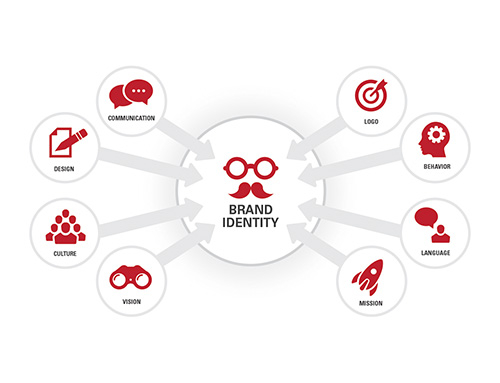
The Quell Group has conducted audits of more than 460 websites using our proprietary QSearch tool. This diagnostic software helps uncover more than 40 different technical issues that can impair website capabilities in search, usability, performance, social and site security.
We compiled the results of the most recent 150 website audits conducted in 2019 to identify the frequency of these issues and their resulting impact on the overall website performance grade (A+ to F-) in QSearch. Improving a website’s grade by addressing these issues ensures better user experience and improved ranking and visibility by search engines.
These eight issues were most frequently identified, and in many cases can be fixed quickly and easily to deliver immediate benefits to user experience and online visibility. Here are eight fixes:
- Encourage Page Social Sharing (100% of Websites)
Every website can do a better job at encouraging and making social sharing easy for visitors. At a minimum, all of the shortcuts to your social channels (LinkedIn, Twitter, YouTube, Facebook and Instagram) should appear in the footer or header on every website page. Beyond that, you need to create great content made for social sharing, and embed those social buttons to make it easy for users to share your content with their networks of colleagues and friends. While getting website visitors to subscribe to your owned media (emails, newsletters, promotions) should be a primary objective, the lifetime value of getting a new follower on those social channels is enormous as well. - Optimize Your Images to Reduce Their File Size (96% of Websites)
Images on average make up 21% of a website’s page weight, and poorly optimized images are the #1 reason for slow page load times. Users have limited patience for pages that take more than a few seconds to load, and this can impact bounce rates, conversions and SEO performance. Optimize images by choosing the right file format (PNG, SVG, JPEG and GIF formats are supported by virtually all browsers) and compression method that will result in acceptable quality and file size for your specific images. - Remove Inline Styles (94% of Websites)
Inline styles are an older HTML coding practice that has been dropped in favor of using cascading style sheets (CSS). CSS is an external file that can be created once and applied to all linked pages, saving time and effort. If changes need to be made, the .css file can be modified and the resulting changes will apply to all of the website pages. While using CSS improves the consistency of user experience and makes changes easier, it can also reduce page load times if implemented correctly. - Add ALT Attributes to All Images (87% of Websites)
ALT is an HTML attribute that specifies alternative text to be displayed when an element (usually an image) cannot be rendered. Most importantly, the ALT attribute (often called an ALT tag) is used by screen readers to provide website accessibility for visitors who are vision-impaired or blind, and is part of the W3C’s Website Content Accessibility Guidelines (WCAG). In addition, the ALT attribute can provide SEO benefits by providing additional opportunities to include relevant keywords for images that can be indexed by search engines. - Use Your Main Keywords Across the Important HTML Tags (83% of Websites)
While titles and descriptions are the most important page metadata for SEO, the header tags (H1, H2, H3, etc.) provide an additional opportunity to increase your chances of ranking for specific keywords. Header tags signal to search engines which topics are most important on your page, and the relative priority of each one. Make sure to use concise header tags that reflect the voice of the customer and the keywords that visitors would actually use in search. - Create and Link Associated Instagram Profile (81% of Websites)
More than 1 billion people use Instagram each month, making it the second-most-popular social network behind its social sibling Facebook. It is the second-most-downloaded app on the Apple Store after YouTube. While many may dismiss its photo-and video-intensive content as unimportant to most business websites, there is no denying that its audience is powerful and growing rapidly. If there is a way to make this unique social channel work for your website, and you have the original photo and video content needed to keep it fresh, make the investment. - Improve the Size of Tap Targets (78% of Websites)
While virtually all websites have moved to responsive design to support mobile devices like smartphones and tablets, more than three-quarters of websites still need to make other changes to make websites easier to use on the small screen. One of the biggest usability improvements is making links or buttons larger for users to easily tap on a touchscreen. Making these tap targets larger – as well as making sure that font sizes are legible across all screens – will help to provide a better user experience. - Update URLs to be More Human and Search Engine Readable (67% of Websites)
Scary URLs can be off-putting to human visitors and difficult for search engines to decipher. We recommend making links as readable as possible by reducing length and eliminating code strings and special characters. A friendly URL is easy to remember, creates an obvious and consistent hierarchy, and incorporates keywords as much as possible to make the relevant content visible to search engines.
Of course, this diagnostic tool is most useful for uncovering technical issues with your website. It can’t tell you if you have customer-centric content, a consistent user experience, robust conversion opportunities, integration with CRM or marketing automation platforms, or key messaging that supports your overall branding and positioning objectives. Evaluating those website attributes are just as important – perhaps more so – and require the skill and insight of digital marketers with decades of experience like those at The Quell Group.
Let’s get it started. Contact our digital team to find out how we can get you on the path to a better website today.





